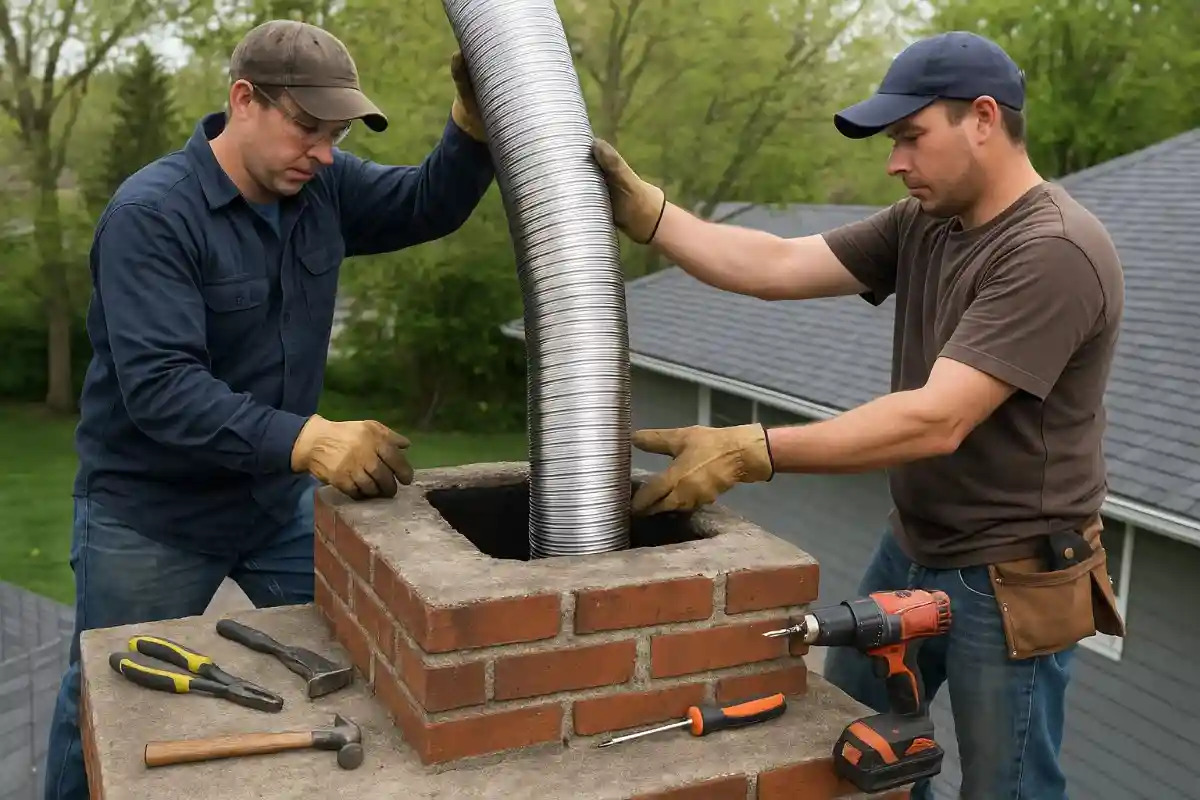It’s that time of year again in San Diego—the skies start to darken, the air smells fresh, and the rain finally makes its return. For many homeowners, this is a welcome change from the usual sunshine, but for those with older houses, the wet weather sometimes brings some unwelcome surprises. One of the most common? Water sneaking into your home through the chimney. If you’ve ever noticed stained walls near your fireplace or a mysterious musty smell after a downpour, you might be wondering if there’s a simple fix. Can installing a chimney liner really put an end to those pesky leaks during San Diego’s rainy months? Let’s take a closer look at what’s really going on up there and how a Chimney Liner might be your rainy season lifesaver.
Why Do San Diego Chimneys Leak When It Rains?
Many people think of San Diego as a place where you barely need to own an umbrella, but when those rare storms hit, our homes aren’t always as ready for the rain as we wish. Chimneys, in particular, can be a weak point—especially in older houses or those built before modern waterproofing methods became standard. Over time, mortar cracks, bricks get porous, and flashing (that metal strip meant to keep water out where your chimney meets the roof) starts to fail.
When water finds its way inside the chimney, it can trickle down and show up as damp patches, peeling paint, or even puddles near your fireplace. Sometimes, the problem is inside the chimney itself—lining materials can break down, or maybe there wasn’t a proper liner installed in the first place. Without a good barrier, rain can seep right through and make itself at home in your living room.
“The best time to fix a leaky chimney is before the rain starts—but the second-best time is now.”
How Chimney Liners Keep Water Out
Think of a chimney liner as a raincoat for your chimney. Instead of letting water soak through the bricks and mortar, the liner provides a smooth, waterproof surface that channels water (and smoke, when you’re using the fireplace) safely outside. There are a few different types of liners—some made of metal, others of ceramic or special cement—and each one acts as a shield between the inside of your chimney and the elements.
When installed correctly, a liner can block moisture from getting into the masonry and causing problems. It also helps prevent drafts, keeps your home warmer, and can even make your fireplace safer by reducing the risk of sparks escaping into your walls. For homes in San Diego, where sudden rains can catch you off guard, a chimney liner is a smart way to keep your chimney dry all season long.
Chimney Liner Quick Comparison Table
| Key Features | Safety | Cost | Emergency Service |
|---|---|---|---|
| Blocks water entry, improves draft, extends chimney life | Reduces fire hazards, keeps flue gases contained | $$ – $$$ (Depends on liner type, size, and install) | Many companies offer same-day or next-day help for leaks |
| Works with wood, gas, or oil fireplaces | Stops carbon monoxide leaks into your home | Potential savings from preventing water damage | Temporary patches available until full repair |
When a Chimney Liner May Not Be Enough
While a liner can solve a lot of water woes, it’s not a cure-all. If your chimney cap is missing or damaged, rain can pour straight in from above, and that’s a problem no liner can fix alone. Similarly, if the flashing where your chimney meets the roof is old or cracked, water can still creep in around the edges. In some cases, the bricks themselves might be so worn down that they need to be sealed or replaced.
The good news is, most chimney pros can spot these issues during a quick inspection. Often, fixing the leak means a combination of solutions: adding a liner, repairing the cap, and sealing up any cracks. Still, the liner is almost always a key piece of the puzzle for keeping your home dry when gray clouds roll in.
The Bottom Line: Is It Worth It?
If you’re tired of cleaning up after every rainstorm or worried about long-term water damage, investing in a chimney liner is usually a smart move. Not only does it keep water where it belongs (outside!), but it also helps your whole chimney system work better and last longer. Plus, if you ever decide to sell your home, having a well-maintained, leak-free chimney is a big selling point.
The upfront cost can vary depending on the type of liner and how tricky your chimney is, but most homeowners find that it pays for itself in peace of mind and avoided repairs down the line.
Frequently Asked Questions
Q: How do I know if my chimney is leaking?
Look for water stains around the fireplace, peeling paint, or a musty smell after rain. If you see dampness or puddles, that’s a big clue.
Q: Can I install a chimney liner myself?
While it’s technically possible, it’s not recommended unless you have experience. A poorly installed liner can lead to more water problems or even safety risks.
Q: How long does a chimney liner last?
It depends on the material. Metal liners often last 15–20 years, while ceramic or cement types can go even longer with proper care.
Q: Will a liner fix all chimney leaks?
A liner helps a lot, but you may also need repairs to the cap, flashing, or bricks to fully stop leaks.
Conclusion
In a place like San Diego, rain might be a rare event, but when it does come, you want your home to be ready. A leaky chimney can quickly turn a cozy night by the fire into a headache, or worse, a costly repair. By giving your chimney a proper liner, you’re not just patching up a leak—you’re adding years to your chimney’s life and keeping your home safe and dry. Whether you’re dealing with a tiny drip or a full-on waterfall every storm, it’s worth talking to a professional about the best way to protect your chimney for the next rainy season. Don’t wait for the next downpour—consider the benefits of a Chimney Liner today.
Read more : San Diego Chimney Sweep


